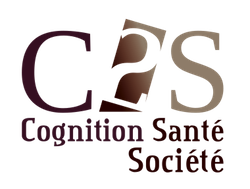Looking through a glass onion: Exploring the validity of eye-tracking technology in capturing self-directed attention
Résumé
Self-directed attention is a central aspect in most psychological models in the clinical, social and personality literature. However, precise measures of self-directed attention are lacking. Building on recent methodological developments, the present study (N=104) provides an exploratory assessment of the Incidental Mirror Exposure (I-ME) paradigm combining reflective screens with eye-tracking devices to measure self-directed attention. Personality traits associated with self-directed attention were assessed to evaluate the theoretical validity of basic oculometric measures. We additionally suggest a novel measure of self-focus integrating time spent looking at the self-reflecting area of the screen and depth of the gaze looking through the screen. Results underline the relevance of eye-tracking paradigms to capture maladaptive self-directed attention such as social anxiety, vulnerable narcissism, and self-absorption.
| Origine | Fichiers éditeurs autorisés sur une archive ouverte |
|---|---|
| licence |



